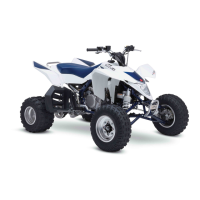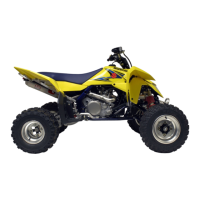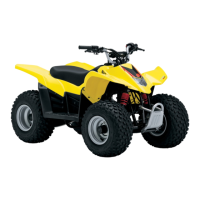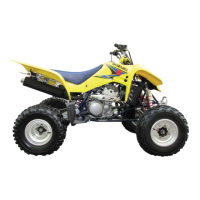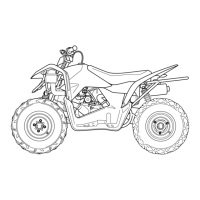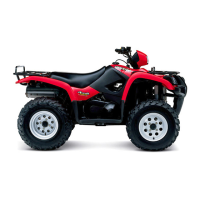6-2
COOLING
AND
LUBRICATION
SYSTEM
ENGINE
COOLANT
At
the time of manufacture, the cooling system is filled with a 50:50 mixture of distilled water and ethylene
glycol anti-freeze. This
50:50 mixture will provide the optimum corrosion protection and excellent heat pro-
tection, and
will protect the cooling system from freezing at temperatures above -31
"C
(-24
"F).
If the vehicle is to be exposed to temperatures below
-31
"C
(-24
"F),
this mixing ratio should be increased
up to 55% or
60%
according to the figure.
*
Use a high quality ethylene glycol base anti-freeze, mixed with distilled water. Do not mix an
alcohol base anti-freeze and different brands of anti-freeze.
*
Do not put in
60%
and more anti-freeze or
50%
and less. (Refer to below figure.)
'
Do not use a radiator anti-leak additive.
Anti-freeze density
50% Engine coolant including reserve tank capacity
Freezing point
('F)
('C)
32
0
14 -10
("F)
('C)
(kgftcrnz)
E
4
-20
302 150
.-
o
-
284
140
1.5
a
-22 -30
C
.-
e
01
3
X
266 130
0.9
0
-40
o,
C
ol
E
.-
%
248
120
0.5
LL
-58 -50
m
Cn
-76 -60 230 110
0
2
a
-94
-70
212
100
20
40
60
80 100
0
10
20
30
40 50
60
Density
("to)
Dens~ty
(%)
50%
Anti-freeze
Fig.
1
Engine coolant density-freezing Fig.
2
Engine coolant density-boiling
point curve point curve
-30
"C
(-24
"F)
700 ml (1.5!1.2 US/lmp.pt)
You can be injured by scalding fluid or steam if you open the radiator cap when the engine is
hot. After the engine cools, wrap a thick cloth around cap and carefully remove the cap by
turning
it
a quarter turn to allow pressure to escape and then turn the cap all the way off.
*The engine must be cool before servicing the cooling system.
*
Coolant is harmful;
If
It
comes in contact with skin or eyes, flush with water.
If swallowed accidentally, induce vomiting and call physlclan Immediately.
Keep it away from children.
Water 700
m1 (1.511.2 US!lrnp.pt)

